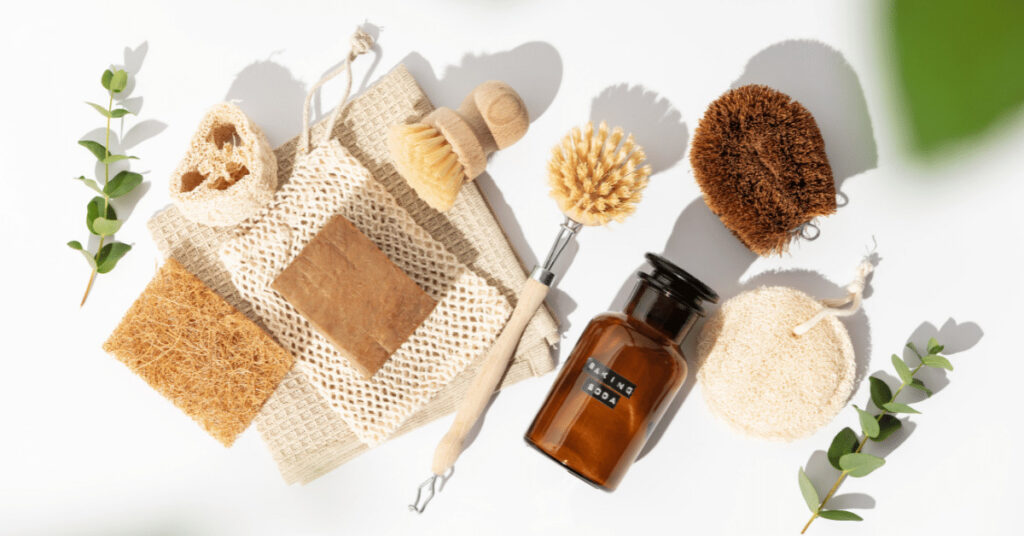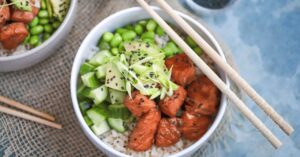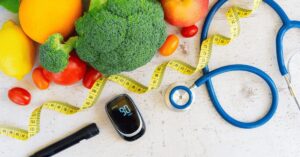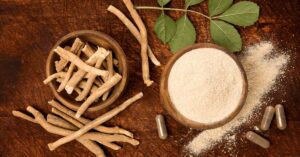
Toxin free living – you may be asking, is there even such a thing? We live in a world where everything is loaded with toxins including the foods we eat, the makeup we put on our faces, the lotions and soaps we use on our bodies, the products we use to clean, the air we breathe in and so many more. Toxins are just about everywhere you turn your head. Toxins are a cause for many of the health concerns happening in the world today. If I start listing them here, we’ll never get down to the actual thing you came for, how to live a more toxin free life.
I’m going to help you start living as toxin free as you possibly can. But first, let me help you avoid the overwhelm as you sift through this blog. As you know, there are toxins in everything so don’t go through this blog and insist on changing out every product in your home all at the same time. Really decide which are the easiest things for you to change right now and start there. Take your time making a switch over to the toxin free products because this is not an overnight change. It takes most people years of conscious education and practice to really determine how many things in their lives are full of toxins and then to find their favorite alternatives.
SUGGESTION:
Go through each of the sections of this blog and determine which you use most often, and which costs less to swap out.
Food & Water
When it comes to food and water, there are many chemicals that can be in your tap water and even in certain bottled water that you find in the store. And there are so many chemicals used in processed foods as well as produce that is not grown organically or has been preserved for longer shelf life. Many foods that have been eaten for generations and were at one time considered nutritional, are now the root causes of many illnesses due to the toxins that are now a part of the harvesting process. Not only are the toxins unhealthy for your body, but they are even taking away the nutritional properties of foods that you would expect to be good for your body. It’s unfortunate, but it’s what is happening throughout the world. I’m happy you’re here to learn more about this so you can avoid ingesting toxins as much as possible.
How can you avoid these toxins in your food that should be feeding you and your family and keeping everyone healthy? Let’s start with leaning toward organic and non-GMO foods. There are certain foods that are higher in toxins due to how they’ve been grown compared to others. You can find the DirtyDozen and Clean Fifteen by clicking the links. These are lists supplied yearly by the Environmental Working Group (EWG) that depict the foods that should always be organic (Dirty Dozen) and those that are not such a high concern (Clean Fifteen).
Aside from following these lists, another recommendation is to avoid processed foods as much as you can. Processed foods are not the healthiest for anyone. Do you know that nutrition labels on processed foods list the ingredients in order based on how much is found in each product? So when you’re doing your grocery shopping and can’t avoid processed foods, make sure you check out those ingredients. If there are more than 5 ingredients listed, unless they include vegetables and fruits or ingredients that you know exactly what they are and are healthy, do your best to avoid it.
Some ingredients to avoid in processed foods include:
- Palm oil
- Shortening
- High fructose corn syrup
- Artificial sweeteners
- Sodium and Potassium benzoates
- Sodium Nitrates and Nitrites
- Blue, green, red and yellow dyes
- Gluten (wheat, barley, rye, triticale, malt, brewer’s yeast)
- MSG
- Butylated hydroxyanisole (BHA)
The foods you eat may be the easiest to swap out for non-toxic alternatives before any others on this list. But that’s up to you! One of the apps I love to use and share with everyone to determine what foods are best is the HealthyLiving app by EWG. All you need to do is scan your foods and it will rate it for you and break down the rating so you can understand why the food has that rating. Whether you’re just starting out or have been eating non-toxic for years, this app can be such a helper when shopping.
When it comes to water, you want to make sure it’s filtered. There are many filters out there from pitchers to attachments on your water faucets or whole house filters that will filter the water throughout your entire house. You can find a selection of water filters in every price range.
Cookware & Plastic
The pots and pans you cook in and the plastic containers you store your foods in could also potentially be toxic products. We all love the idea of nonstick pans because they wipe clean in 2 seconds after cooking those delicious dinners, but at the same time they’re releasing chemicals into your food. If you’ve already switched to non-toxic foods, you probably aren’t happy about this.
Some toxins that can be found in your cookware are aluminum, Teflon (PTFE), perfluorooctanoic acid (PFOA), copper, cadmium, nickel, and lead. Aluminum has been shown to lead to Alzheimer’s disease and dementia, while Teflon has been shown to release toxic gasses when heated and some of them are known to be carcinogenic. PFOA has been linked to tumors and effects on the immune and endocrine systems as well as the liver. We can go through what each of these toxic effects are, but I think you get the point – you don’t want them going into your body.
As far as plastic containers are concerned, the main concern is Bisphenol-A, better known as BPA. This hormone disruptor can lead to infertility, early puberty (yes if you have young kids, do your best to replace plastic in your house), thyroid damage, obesity-promoting effects and so much more.
Some suggested alternatives for these chemical-releasing cookware and plastic products are:
Cookware: Look for ceramic that has glaze made with non-toxic minerals and oxides. Refer to the California Prop 65 standards. Cast iron pans like Le Cresuset are also a great alternative to avoid leaching of toxic chemicals into your food.
Plastic: Look for BPA-free options or better yet, swap it for glass, ceramic, or stainless steel. You’ll love these options and they make your food taste better and last longer.
Makeup & Skincare
Face it, we all use these products. Whether it’s makeup on your face or soaps and lotions to keep clean and smooth, we use them. You would never think companies are creating these products that we’re applying to our bodies with so many chemicals, but they are. So you need to start investigating. Many of these chemicals have been linked to cancer, hormonal imbalances, and respiratory issues…and that’s only the beginning.
Some ingredients to avoid in these products include:
- Parabens
- Carbon black
- Petroleum jelly
- Fragrance
- Oxybenzone
- Phthalate
- Formaldehyde
- Ethanolamines
- 1,4- Dioxane
- Butylated hydroxytoluene (BHT) and butylated hydroxyanisole (BHA)
Some great brands that offer cleaner, toxin free makeup and skincare products include Crunchi, BeautyCounter, and Thrive Causemetics. You may even have a friend who sells one of these. If you’re out in the store and need makeup or skincare products, use these great resources to ensure you’re getting something good for your body: Skin Deep database and the Think Dirty app.
Cleaning products
Oh, cleaning products, where do we begin? Toss the bleach and ammonia, antibacterial products, products with artificial fragrances, corrosive oven, drain and toilet cleaners, fabric softeners and dryer sheets, and air fresheners.
Most of the chemicals found in these products are carcinogens, endocrine disruptors and/or neurotoxins. That means they may cause or promote cancer, cause hormone imbalances that lead to infertility, miscarriage, menstrual issues, ADHD, cancer, affect brain activity, and cause issues such as headaches and memory loss.
So how can you swap these nasty toxins out of your home? Look for products labeled “fragrance-free” or “unscented”. You can also make your own, which is super easy. Use essential oils, vinegar, baking soda, course salts, lemon juice. There are so many options to make your own cleaning products – go ahead and take your pick.
ACTION:
Go through all of the above toxic areas and rate them by how often you use each. Determine which may be affecting you the most. Notice if you are experiencing any of the common health concerns listed for each. Choose which of these areas you will begin swapping out first. As time moves forward, move onto the next areas to reduce your toxic intake.
If you’re ready to clean out the toxins that are currently in your system, a detox would be a great next step. Join Dr. Ryan for an upcoming detox. Classes start soon, register here.







